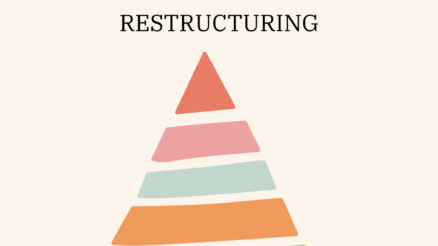Organizational restructuring is an essential tool for businesses seeking to stay competitive and relevant, yet the shifts in structure can cause unexpected waves of disruption and confusion amongst staff.
The success or failure of a structural change often comes down to how well employees handle the transition; no matter how carefully designed your restructuring plan may be, its success ultimately depends on how you execute it.
Therefor, it is important to understand how restructuring affects employees.
But what do employees need from leaders during organizational restructuring? And more importantly, how can management utilize this period of change to create an engaged, productive workforce?
In this blog post, we’ll explore these questions and discuss ways that managers can ensure positive outcomes when navigating times of significant reorgs or changes in roles.
Let’s dig deeper and learn about these concepts.
What is organizational restructuring?
Organizational restructuring is a change in organization’s structure and processes in order to better achieve its business goals. Restructuring involves changes in workforce, reorganisation of organizational hierarchy, shifting job titles and roles, departments or divisions, reporting structures, and workflows.
The purpose of restructuring range from improving organizational agility reducing overhead costs, developing new capacities and capabilities, improving operational efficiency to finding new business opportunities.
How restructuring affects employees?
Organizational restructuring is often necessary and there are many benefits of restructuring but the changes it brings can have a huge impact on employees
Layoffs
Layoffs are a common result of organizational restructuring and can have a long-lasting effect on employees who are affected. Layoffs are defined as the permanent elimination of positions or termination of employment due to economic conditions or restructuring. When layoffs occur, it means that employees who worked in those roles no longer have their jobs and must find another job or work form themselves.
Deep cuts
Deep cuts refer to drastic cost-saving measures taken in an organization during times of restructuring, such as reducing staff, freezing salaries and benefits, or closing down certain departments. Deep cuts can have a significant effect on employees, both financially and emotionally. It makes staff feeling demoralized and uncertain about their future.
When salaries and/or benefits are frozen or cut due to organizational restructuring, it can have a direct and detrimental impact on employee morale. A decrease in salary can lead to employees feeling undervalued, demotivated and less engaged at work.
Disruption to team
Another negative effect of organizational restructuring on employees is the disruption to team dynamics. During a restructuring process, teams may be disbanded, reorganized, and even relocated to different offices. This overhaul can be difficult for employees as they are suddenly removed from familiar surroundings, processes and colleagues with whom they have grown accustomed to working with.
New roles and responsibilities
When it comes to organizational restructuring, new roles are often created. This can be a source of both excitement and anxiety for employees. On the one hand, they may be eager to explore new opportunities or receive more responsibility in their positions.
On the other hand, employees may fear being ill-prepared or underqualified for their new roles. This is especially true if the restructuring process leads to a change in job titles, responsibilities and/or expectations. For example, an employee who was previously in a support role may now find themselves tasked with more complex projects.
Negative emotions
Employees may also experience a range of emotions such as anger, resentment, frustration and sadness when faced with organizational restructuring. It is not uncommon for employees to feel helpless or betrayed when confronted with layoffs, deep cuts or new roles and responsibilities.
Anxiety is common during times of restructuring as employees are uncertain how the changes will affect their job security and roles. Even if they are not directly affected by the changes, they may still feel uneasy or stressed about how the company is being restructured.
Furthermore, employees may feel undervalued during times of organizational restructuring. As salary and benefits are cut or frozen, staff can feel like they are not being appreciated for the work they do and their contributions to the company. This can lead to a lack of engagement in their role and decreased motivation to perform at their best.
Low morale and productivity
Low morale due to restructuring can have a serious and lasting effect on employees, leading to decreased motivation, engagement and productivity. This is especially true when it comes to large-scale restructuring efforts that involve layoffs and deep cost-cutting measures.
When salaries and benefits are frozen or cut due to organization restructuring, employees may feel undervalued, unappreciated and demotivated. This can lead to decreased motivation and commitment at work, resulting in lower productivity and engagement levels.
Need of new skills and knowledge
Employees often struggle to upgrade their skills and knowledge required to adjust in new structure. It’s always challenging for employees to assess what new situation demands from them. What are those crucial skills that are needed most in restructuring process and after that.
In this case, role of HR is important in organizational restructuring. Because it is HR who identifies and takes actions to not only communicate with employees but also initiate training program for employees. The training programs should provide employees with the necessary skills and knowledge needed for success in their new roles.
How to manage negative effects of organizational restructuring on employees
Organizational restructuring can be a difficult and stressful process for employees, leading to low morale, decreased motivation and productivity. However, there are steps that employers can take to manage the negative effects of restructuring on their workforce.
First and foremost, employers should ensure open and transparent communication throughout the restructuring process. This includes keeping employees informed about how the changes will affect them, how long the process is expected to take, what new roles and responsibilities are involved and how their jobs may be impacted.
Additionally, employers should provide employees with access to regular feedback and support during the restructuring period. To ensure that employees are properly equipped to adjust to their new roles, employers should create a platform for dialogue between managers and staff to discuss how individuals can make a successful transition into their new positions.
An internal training program can be an invaluable tool for helping employees adjust to the new structure and roles brought about by organizational restructuring. By investing in the development and growth of their staff, companies can equip employees with the necessary skills and knowledge needed for success in their new roles.
Final Words
The next time your organization goes through a restructuring, think about how restructuring affect your employees. They may experience layoffs, deep cuts, disruption of their team, stress from new roles and responsibilities, negative emotions, low morale and productivity. To help them through this tough time, they may need clear two-way communication, new skills and knowledge along with emotional support.



